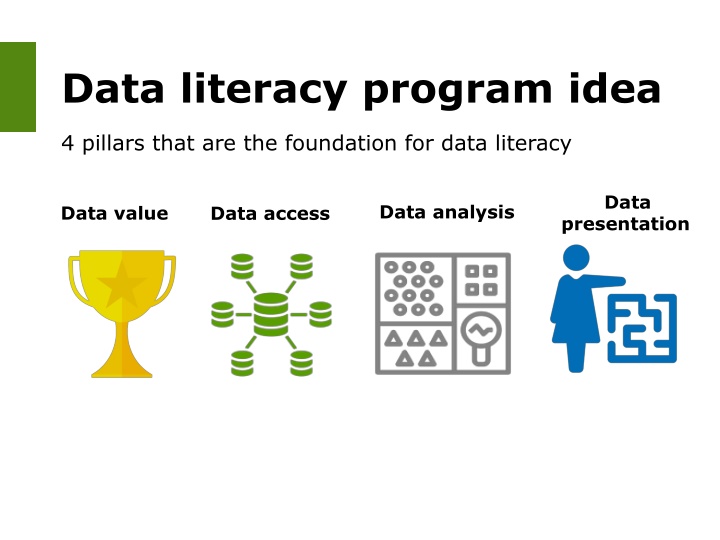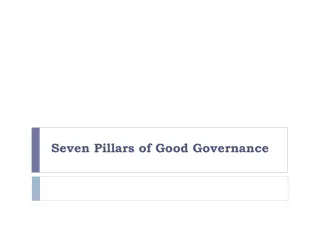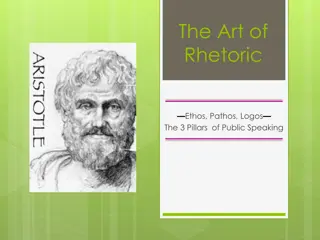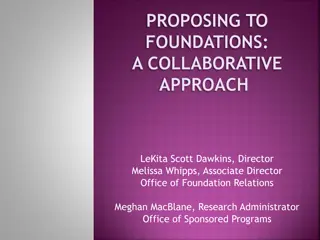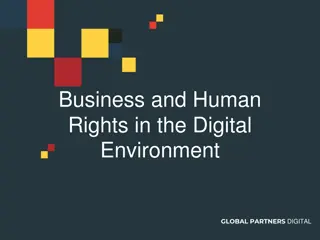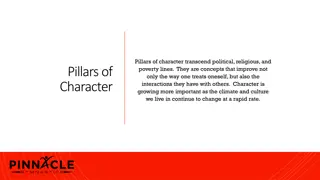Building a Strong Data Foundation: 4 Pillars for Success
Discover the key pillars that form the foundation of data literacy: Data, Data Analysis, Data Value, and Data Access Presentation. Learn about the importance of communication in highlighting the value of data, driving a data-driven culture, and fostering collaboration at all levels within an organization. Share your insights, success stories, and challenges in the realm of data utilization.
Download Presentation

Please find below an Image/Link to download the presentation.
The content on the website is provided AS IS for your information and personal use only. It may not be sold, licensed, or shared on other websites without obtaining consent from the author.If you encounter any issues during the download, it is possible that the publisher has removed the file from their server.
You are allowed to download the files provided on this website for personal or commercial use, subject to the condition that they are used lawfully. All files are the property of their respective owners.
The content on the website is provided AS IS for your information and personal use only. It may not be sold, licensed, or shared on other websites without obtaining consent from the author.
E N D
Presentation Transcript
Data literacy program idea 4 pillars that are the foundation for data literacy Data Data analysis Data value Data access presentation
Five stages towards data-driven culture Source: https://www.smartsheet.com/sites/default/files/IC-Graphic-of-Five-Stages-Toward-Data-Driven-Culture.svg
How to communicate the value of data? DATA IS FOR EVERYONE: COLLABORATION AND INVOLVEMENT AT ALL LEVELS IN THE ORGANIZATION IS KEY TO SUCCESS. "Advocate for the use of data throughout each state agency and facilitate data-informed decision-making in all agencies." Oregon s Data Strategic Plan Data Practices https://www.oregon.gov/das/OSCIO/Pages/DataStrategy.aspx#principles
How to communicate the value of data? Goal is to collect relevant and accurate data as well as understand what it means so that we can act on it. Data can help us understand performance, solve problems, and make more confident and better decisions. Data can be used to identify trends to help predict what could happen in the future so you can be more proactive about work and problems. Data can save money.
Discussion We d like to hear from you! Do you have a general talking point that you d add to the list? Do you have a success story that you d like to share? Challenges you d like to talk through?
